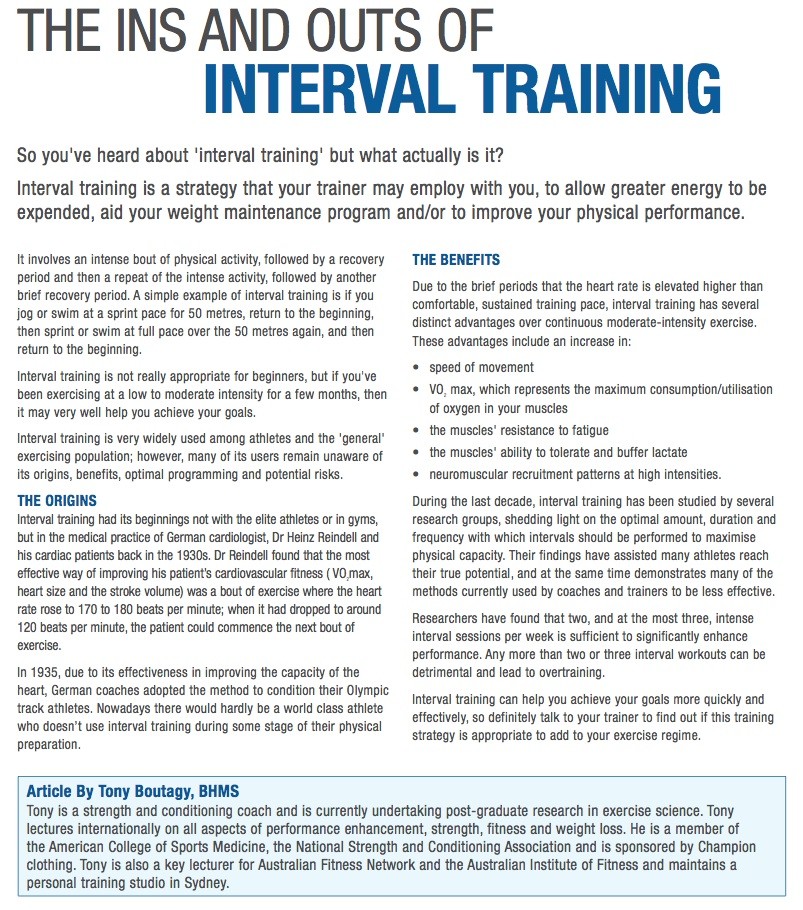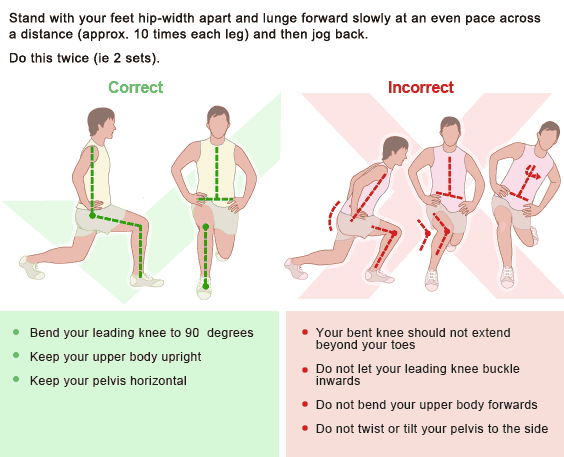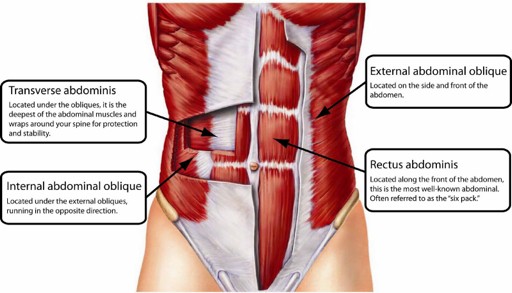Top 10 Best Exercises to Keep You Healthy and Fit
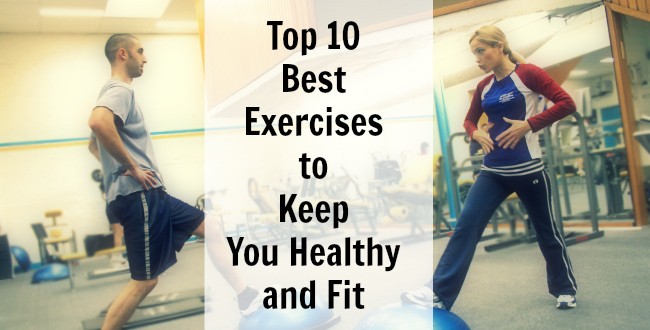
If you’re not an athlete or serious exerciser — and want to work out for your health or to fit in your clothes better — the gym scene can be intimidating. Just having to walk by treadmills, stationary bikes, and weight machines can be enough to make you head straight back home to the couch. However, it's not necessary to spend four hours in the gym every day to feel and see a marked improvement to your overall health. What is necessary, however, is to make sure that you are maximizing your time -- even if is far less than four hours per day.
The focus of this article is exercise -- [highlight] the 10 favorite, most effective ones to reach your goals[/highlight]. Obviously, any exercise program depends on the underlying health status of the participant. Be certain that your health is appropriate for exercise prior to attempting a new program.
This refers to doing almost any type of exercise at a variable pace. For example, if you are walking or doing push-ups, vary the pace of the exercise. You can walk normally for a minute or so, and then speed up a bit, and then return to normal speed several times. For exercises like push-ups, do a few slowly and do others more quickly and, like walking, repeat these faster and slower intervals several times. Interval training helps the body to adjust its aerobic system (heart rate, breathing, and metabolism) to burn more calories to lose weight and strengthen muscles. The basic idea is to vary the intensity within your workout, instead of going at a steady pace.
Note: Check out this post on Tabata Training for a great 4 minute, high-intensity interval workout.
Walking is simple yet powerful. It can help you stay trim, improve cholesterol levels, strengthen bones, keep blood pressure in check, lift your mood and lower your risk for a number of diseases (diabetes and heart disease for example). A number of studies have shown that walking and other physical activities can improve memory and resist age-related memory loss.
All you need is a well-fitting and supportive pair of shoes. Start with walking for about 10-15 minutes at a time. Over time you can start to walk farther and faster until you’re walking for 30 to 60 minutes on most days of the week.
Swimming can be easily called the perfect workout. The buoyancy of the water supports your body and takes the strain off painful joints so you can move them more fluidly. Research finds that swimming can improve your mental state and put you in a better mood. Water aerobics is another option. These classes help you burn calories and tone up.
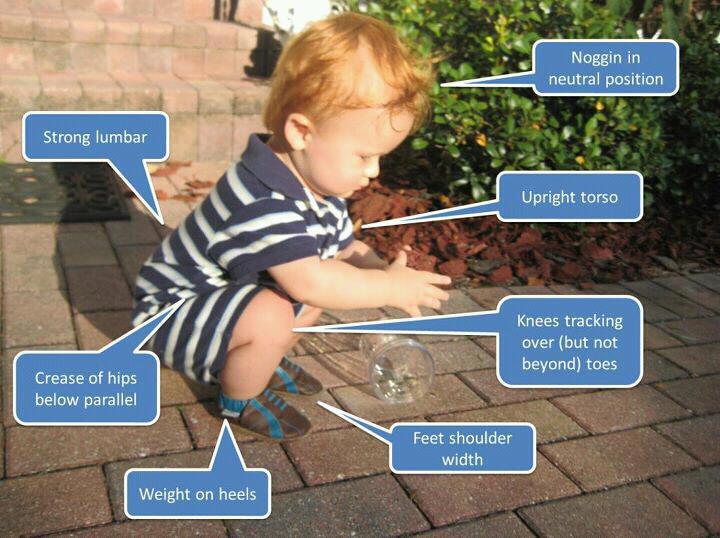 This exercise is an excellent calorie burner because squats use the largest muscle groups in the body. Squats are exercises that consist of an up and down motion of the body that resembles the motion of getting out of a chair. In fact, some trainers suggest that a person new to trying to do squats can practice by getting up and down from a chair. The proper way to begin is to keep your back straight, feet spread apart about shoulder length with both arms extended, knees over the ankles and then go downward with your butt just touching the chair; then return to your original standing position. Eventually, stop using the chair and you'll be doing effective squats. No matter what you do, you should incorporate squats into your routine. If you train for strength, squat using a barbell or holding dumbells in your hands. If you want to train for endurance or cardio, use body-weight squats.
This exercise is an excellent calorie burner because squats use the largest muscle groups in the body. Squats are exercises that consist of an up and down motion of the body that resembles the motion of getting out of a chair. In fact, some trainers suggest that a person new to trying to do squats can practice by getting up and down from a chair. The proper way to begin is to keep your back straight, feet spread apart about shoulder length with both arms extended, knees over the ankles and then go downward with your butt just touching the chair; then return to your original standing position. Eventually, stop using the chair and you'll be doing effective squats. No matter what you do, you should incorporate squats into your routine. If you train for strength, squat using a barbell or holding dumbells in your hands. If you want to train for endurance or cardio, use body-weight squats.
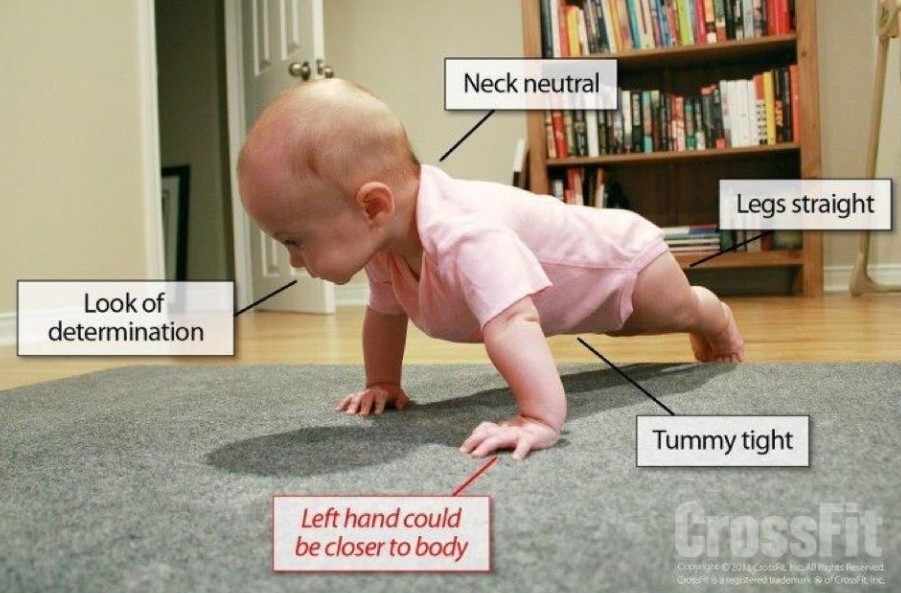 The basic push-up is the classic exercise to strengthen the upper body (chest, shoulders, and triceps) and core (abdominal muscles). Beginners can first do push-ups by spreading their fully extended arms slightly more than shoulder width apart with their hands against an unmovable object like the edge of a kitchen countertop. Then bend your elbows until your chest almost touches the edge of the counter op, allowing only your toes to bend and keeping your back and legs in a straight line. Then push your body away from the countertop until your arms are again fully extended. As you progress, you should use lower stationary objects (for example, a stationary bench) and eventually do the push-up with your hands on the floor.
The basic push-up is the classic exercise to strengthen the upper body (chest, shoulders, and triceps) and core (abdominal muscles). Beginners can first do push-ups by spreading their fully extended arms slightly more than shoulder width apart with their hands against an unmovable object like the edge of a kitchen countertop. Then bend your elbows until your chest almost touches the edge of the counter op, allowing only your toes to bend and keeping your back and legs in a straight line. Then push your body away from the countertop until your arms are again fully extended. As you progress, you should use lower stationary objects (for example, a stationary bench) and eventually do the push-up with your hands on the floor.
Lunges work the same large muscle groups as the squats, but can work additional leg muscles and improve balance. Lunges are done by taking a big enough step forward that the knee forms about a 90-degree angle. However, you must keep your spine in a neutral position (upright position, no bending forward). Your trailing leg, at the same time, should have its knee come close to the floor and have the toes accept significant body weight. Then, return to a standing position and repeat with the other leg. After you master the lunge, you can vary the exercise by placing the advanced leg to the right or left to mimic more variable movement, such as the angles you might encounter during a nature hike.
The standard abdominal crunch is an excellent way to strengthen and define those abdominal muscles. There are two ways to start:
How to master crunches: keep your neck in line with your spine. Tuck in your chin so it doesn't stick out. Breathe normally. To keep chest and shoulders open, keep your elbows out of your line of vision.
The plank is one of the best exercises because it tightens the deepest core muscles. It’s a static exercise where you use your arms to raise yourself off the floor and hold the whole body straight and rigid, like a plank of wood. You can do it anywhere, you don’t need any equipment and it only takes a minute (literally). What’s more, it is more effective than sit-ups and crunches because these work only the superficial abdominal muscles.
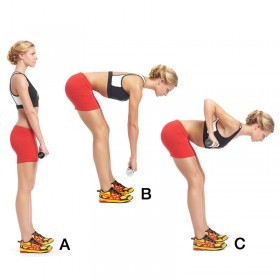 This exercise can give the last groups of muscles (back and biceps) a good workout. Beginners can start by sitting on a bench, but the exercise is usually done while standing. You should stand with your feet shoulder-length apart, with knees bent, and hips flexed forward at hip level. Tilt the pelvis forward slightly, contract the abdominal muscles, and extend (straighten) the upper back. Hold your hands straight down beneath your shoulders and make a fist. Then flex your elbows so that your forearms and hands come all the way up and in toward your body. Pause for about a second or two, and return your flexed arms to their previously extended position. People soon add small weights instead of just making a fist.
This exercise can give the last groups of muscles (back and biceps) a good workout. Beginners can start by sitting on a bench, but the exercise is usually done while standing. You should stand with your feet shoulder-length apart, with knees bent, and hips flexed forward at hip level. Tilt the pelvis forward slightly, contract the abdominal muscles, and extend (straighten) the upper back. Hold your hands straight down beneath your shoulders and make a fist. Then flex your elbows so that your forearms and hands come all the way up and in toward your body. Pause for about a second or two, and return your flexed arms to their previously extended position. People soon add small weights instead of just making a fist.
Yoga helps you become more aware of your body's posture, alignment and patterns of movement. It makes the body more flexible and helps you relax even in the midst of a stress stricken environment. This is one of the foremost reasons why people want to start practicing yoga - to feel fitter, be more energetic, be happier and peaceful. The beauty of yoga is that it can be practiced pretty much anywhere, on your own or with other yoga enthusiasts.
[caption id="attachment_14393" align="aligncenter" width="920"] Click to check out a great post care of Breaking Muscle.[/caption]
Click to check out a great post care of Breaking Muscle.[/caption]
Tai chi — a Chinese martial art that incorporates movement and relaxation — is good for both body and mind. In fact, it’s been called “meditation in motion.” Tai chi is made up of a series of graceful movements, one transitioning smoothly into the next. Because the classes are offered at various levels, tai chi is accessible, and valuable, for people of all ages and fitness levels.
Before engaging in these exercises, you should be healthy enough to complete them. Your primary care doctor or your orthopedist should be able to help you if you have any doubts or questions. Also, you must remember that a healthy diet is as important as exercise and together, they both give you the best way to lose weight and gain or define musculature.
[divider]
 AUTHOR BIO
AUTHOR BIO
This article was submitted by UMA, Melbourne based Ultimate Martial Arts & Fitness school.
[divider]
Top 10 Best Exercises to Keep You Healthy and Fit
The focus of this article is exercise -- [highlight] the 10 favorite, most effective ones to reach your goals[/highlight]. Obviously, any exercise program depends on the underlying health status of the participant. Be certain that your health is appropriate for exercise prior to attempting a new program.
1. Interval Training
This refers to doing almost any type of exercise at a variable pace. For example, if you are walking or doing push-ups, vary the pace of the exercise. You can walk normally for a minute or so, and then speed up a bit, and then return to normal speed several times. For exercises like push-ups, do a few slowly and do others more quickly and, like walking, repeat these faster and slower intervals several times. Interval training helps the body to adjust its aerobic system (heart rate, breathing, and metabolism) to burn more calories to lose weight and strengthen muscles. The basic idea is to vary the intensity within your workout, instead of going at a steady pace.
Note: Check out this post on Tabata Training for a great 4 minute, high-intensity interval workout.
2. Walking
Walking is simple yet powerful. It can help you stay trim, improve cholesterol levels, strengthen bones, keep blood pressure in check, lift your mood and lower your risk for a number of diseases (diabetes and heart disease for example). A number of studies have shown that walking and other physical activities can improve memory and resist age-related memory loss.
All you need is a well-fitting and supportive pair of shoes. Start with walking for about 10-15 minutes at a time. Over time you can start to walk farther and faster until you’re walking for 30 to 60 minutes on most days of the week.
3. Swimming
Swimming can be easily called the perfect workout. The buoyancy of the water supports your body and takes the strain off painful joints so you can move them more fluidly. Research finds that swimming can improve your mental state and put you in a better mood. Water aerobics is another option. These classes help you burn calories and tone up.
4. Squats
 This exercise is an excellent calorie burner because squats use the largest muscle groups in the body. Squats are exercises that consist of an up and down motion of the body that resembles the motion of getting out of a chair. In fact, some trainers suggest that a person new to trying to do squats can practice by getting up and down from a chair. The proper way to begin is to keep your back straight, feet spread apart about shoulder length with both arms extended, knees over the ankles and then go downward with your butt just touching the chair; then return to your original standing position. Eventually, stop using the chair and you'll be doing effective squats. No matter what you do, you should incorporate squats into your routine. If you train for strength, squat using a barbell or holding dumbells in your hands. If you want to train for endurance or cardio, use body-weight squats.
This exercise is an excellent calorie burner because squats use the largest muscle groups in the body. Squats are exercises that consist of an up and down motion of the body that resembles the motion of getting out of a chair. In fact, some trainers suggest that a person new to trying to do squats can practice by getting up and down from a chair. The proper way to begin is to keep your back straight, feet spread apart about shoulder length with both arms extended, knees over the ankles and then go downward with your butt just touching the chair; then return to your original standing position. Eventually, stop using the chair and you'll be doing effective squats. No matter what you do, you should incorporate squats into your routine. If you train for strength, squat using a barbell or holding dumbells in your hands. If you want to train for endurance or cardio, use body-weight squats.5. Push-ups
 The basic push-up is the classic exercise to strengthen the upper body (chest, shoulders, and triceps) and core (abdominal muscles). Beginners can first do push-ups by spreading their fully extended arms slightly more than shoulder width apart with their hands against an unmovable object like the edge of a kitchen countertop. Then bend your elbows until your chest almost touches the edge of the counter op, allowing only your toes to bend and keeping your back and legs in a straight line. Then push your body away from the countertop until your arms are again fully extended. As you progress, you should use lower stationary objects (for example, a stationary bench) and eventually do the push-up with your hands on the floor.
The basic push-up is the classic exercise to strengthen the upper body (chest, shoulders, and triceps) and core (abdominal muscles). Beginners can first do push-ups by spreading their fully extended arms slightly more than shoulder width apart with their hands against an unmovable object like the edge of a kitchen countertop. Then bend your elbows until your chest almost touches the edge of the counter op, allowing only your toes to bend and keeping your back and legs in a straight line. Then push your body away from the countertop until your arms are again fully extended. As you progress, you should use lower stationary objects (for example, a stationary bench) and eventually do the push-up with your hands on the floor.6. Lunges
Lunges work the same large muscle groups as the squats, but can work additional leg muscles and improve balance. Lunges are done by taking a big enough step forward that the knee forms about a 90-degree angle. However, you must keep your spine in a neutral position (upright position, no bending forward). Your trailing leg, at the same time, should have its knee come close to the floor and have the toes accept significant body weight. Then, return to a standing position and repeat with the other leg. After you master the lunge, you can vary the exercise by placing the advanced leg to the right or left to mimic more variable movement, such as the angles you might encounter during a nature hike.
7. Crunches
The standard abdominal crunch is an excellent way to strengthen and define those abdominal muscles. There are two ways to start:
- Start by lying on your back with your feet flat on the floor and your head resting in your palms. Press your lower back down. Contract your abdominal muscles (abs) and in one smooth move, raise your head, then your neck, shoulders, and upper back off the floor. Tuck in your chin slightly. Lower back down and repeat.
- You can also do crunches with your feet off the floor and knees bent. This technique may keep you from arching your back. It also uses your hip flexors (muscles on your upper thighs below your hip bones).
How to master crunches: keep your neck in line with your spine. Tuck in your chin so it doesn't stick out. Breathe normally. To keep chest and shoulders open, keep your elbows out of your line of vision.
8. The Plank
The plank is one of the best exercises because it tightens the deepest core muscles. It’s a static exercise where you use your arms to raise yourself off the floor and hold the whole body straight and rigid, like a plank of wood. You can do it anywhere, you don’t need any equipment and it only takes a minute (literally). What’s more, it is more effective than sit-ups and crunches because these work only the superficial abdominal muscles.
- Basic plank: Start on elbows and knees, locking hands together. Straighten legs and raise your body so that you’re supported by the balls of your feet, with feet hip-distance apart. Face the floor, being careful not to arch your back or stick your bottom in the air. Hold this position for 45 seconds to begin with, extending the time as you get stronger.
- Side plank: Lie on your right side, propped up on your elbow. Let your left foot rest on top of your right, and then push up so that your body forms a perfect triangle with the floor. Don’t let your left shoulder roll forward or back. Hold the position for as long as you can, then repeat on the other side.
- Prone sky-dive: Always follow a basic or side plank with this move. Lie flat on the floor, face down, with your arms by your sides. Gently raise your chest off the floor until you can feel your lower back muscles start to work, simultaneously raising your arms up, palms facing upwards and with your thumbs furthest away from your body, pointing to the ceiling. Be careful not to clench your buttocks. Hold for 30 seconds.
9. Bent-over Row
 This exercise can give the last groups of muscles (back and biceps) a good workout. Beginners can start by sitting on a bench, but the exercise is usually done while standing. You should stand with your feet shoulder-length apart, with knees bent, and hips flexed forward at hip level. Tilt the pelvis forward slightly, contract the abdominal muscles, and extend (straighten) the upper back. Hold your hands straight down beneath your shoulders and make a fist. Then flex your elbows so that your forearms and hands come all the way up and in toward your body. Pause for about a second or two, and return your flexed arms to their previously extended position. People soon add small weights instead of just making a fist.
This exercise can give the last groups of muscles (back and biceps) a good workout. Beginners can start by sitting on a bench, but the exercise is usually done while standing. You should stand with your feet shoulder-length apart, with knees bent, and hips flexed forward at hip level. Tilt the pelvis forward slightly, contract the abdominal muscles, and extend (straighten) the upper back. Hold your hands straight down beneath your shoulders and make a fist. Then flex your elbows so that your forearms and hands come all the way up and in toward your body. Pause for about a second or two, and return your flexed arms to their previously extended position. People soon add small weights instead of just making a fist.10. Yoga and/or Tai-Chi
Yoga helps you become more aware of your body's posture, alignment and patterns of movement. It makes the body more flexible and helps you relax even in the midst of a stress stricken environment. This is one of the foremost reasons why people want to start practicing yoga - to feel fitter, be more energetic, be happier and peaceful. The beauty of yoga is that it can be practiced pretty much anywhere, on your own or with other yoga enthusiasts.
[caption id="attachment_14393" align="aligncenter" width="920"]
 Click to check out a great post care of Breaking Muscle.[/caption]
Click to check out a great post care of Breaking Muscle.[/caption]Tai chi — a Chinese martial art that incorporates movement and relaxation — is good for both body and mind. In fact, it’s been called “meditation in motion.” Tai chi is made up of a series of graceful movements, one transitioning smoothly into the next. Because the classes are offered at various levels, tai chi is accessible, and valuable, for people of all ages and fitness levels.
Make sure to note the following
Before engaging in these exercises, you should be healthy enough to complete them. Your primary care doctor or your orthopedist should be able to help you if you have any doubts or questions. Also, you must remember that a healthy diet is as important as exercise and together, they both give you the best way to lose weight and gain or define musculature.
[divider]
 AUTHOR BIO
AUTHOR BIOThis article was submitted by UMA, Melbourne based Ultimate Martial Arts & Fitness school.
[divider]

